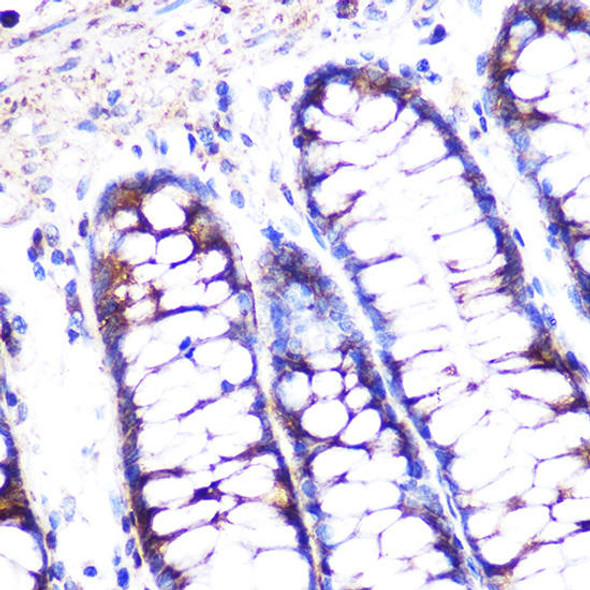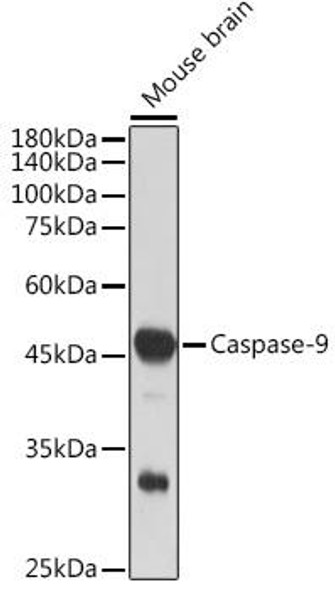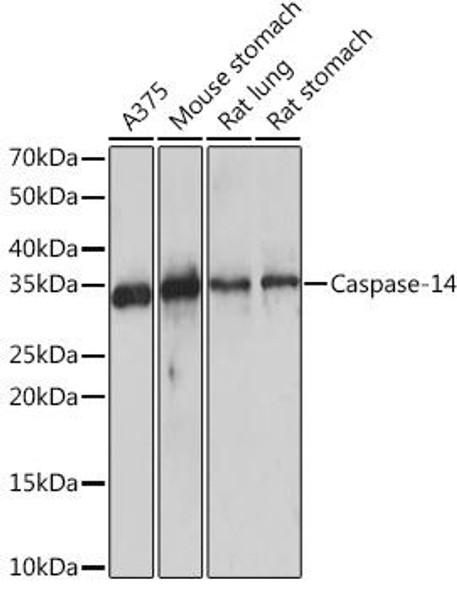Description
| Antibody Name: | Anti-Caspase-1 Antibody (CAB21085) |
| Antibody SKU: | CAB21085 |
| Antibody Size: | 50µL, 100µL |
| Application: | Western blotting |
| Reactivity: | Mouse, Rat |
| Host Species: | Rat |
| Immunogen: | Recombinant protein of human Caspase-1. |
| Application: | Western blotting |
| Recommended Dilution: | WB 1:500 - 1:2000 |
| Reactivity: | Mouse, Rat |
| Positive Samples: | Mouse lung, Mouse spleen, Rat lung |
| Immunogen: | Recombinant protein of human Caspase-1. |
| Purification Method: | Affinity purification |
| Storage Buffer: | Store at -20°C. Avoid freeze / thaw cycles. Buffer: PBS with 0.02% sodium azide, 0.05% BSA, 50% glycerol, pH7.3. |
| Isotype: | IgG |
| Sequence: | Email for sequence |
| Cellular Location: | Cytoplasm |
| Calculated MW: | 10kDa/29kDa/35kDa/42kDa/45kDa |
| Observed MW: | 48KDa |
| Synonyms: | CASP1, ICE, IL1BC, P45, caspase-1, Caspase 1 |
| Background: | This gene encodes a protein which is a member of the cysteine-aspartic acid protease (caspase) family. Sequential activation of caspases plays a central role in the execution-phase of cell apoptosis. Caspases exist as inactive proenzymes which undergo proteolytic processing at conserved aspartic residues to produce 2 subunits, large and small, that dimerize to form the active enzyme. This gene was identified by its ability to proteolytically cleave and activate the inactive precursor of interleukin-1, a cytokine involved in the processes such as inflammation, septic shock, and wound healing. This gene has been shown to induce cell apoptosis and may function in various developmental stages. Studies of a similar gene in mouse suggest a role in the pathogenesis of Huntington disease. Alternative splicing results in transcript variants encoding distinct isoforms. |
 | Western blot analysis of extracts of various cell lines, using Caspase-1 antibody at 1:1000 dilution. Secondary antibody: HRP Goat Anti-Rat IgG (H+L) at 1:10000 dilution. Lysates/proteins: 25ug per lane. Blocking buffer: 3% nonfat dry milk in TBST. Detection: ECL Basic Kit. Exposure time: 180s. |






